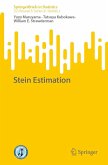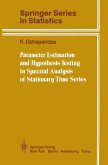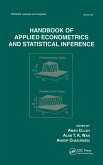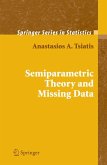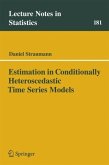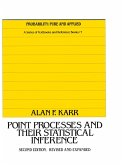The book should be valuable as a reference for researchers and graduate students looking for what is known and unknown in the area of restricted parameter-space-estimation. It assumes a good knowledge of decision theory.
Constance van Eeden is Professeur émérite at the Université de Montréal, Honorary Professor at The University of British Columbia, and Professeure associée at the Université du Québec à Montréal. She previously held appointments at the Centrum voor Wiskunde en Informatica (1951-1960), Michigan State University (1960-1961), University of Minnesota (1961-1965), and Université de Montréal (1965-1989). She was a General Editor of Statistical Theory and Method Abstracts (1990-2004) and Associate Editor of the Annals of Statistics (1974-1977), The Canadian Journal of Statistics (1980-1994) and Annales des sciences mathématiques du Québec (1986-1998). She is a reviewer for Mathematical Reviews and a member of the Noether Award Committee. The Statistical Society of Canada awarded her their Gold Medal in 1990 and the Département de mathématiques et de statistique at the Université de Montréal named their yearly prize for the best-finishing undergraduate student in actuarial studies or statistics, the Prix Constance-van-Eeden. She is a Fellow of the Institute of Mathematical Statistics and of the AmericanStatistical Association, and an Elected Member of the International Statistical Institute. She (co-)authored 66 papers in refereed journals, as well as two books and (co-)supervised 14 PhD and 19 MSc students.
Dieser Download kann aus rechtlichen Gründen nur mit Rechnungsadresse in A, B, BG, CY, CZ, D, DK, EW, E, FIN, F, GR, HR, H, IRL, I, LT, L, LR, M, NL, PL, P, R, S, SLO, SK ausgeliefert werden.
"This book is well written and well organized. The material is motivated with examples...[t]he monograph could be used for PhD-level special topics class...,[and] students with a background in mathematical statisics would benefit from researching and presenting in detail the specific examples of interesting problems." (Mary Meyer, for Biometrics, December 2007)
"This monograph contains a critical review of 50 years of research on estimators in convex, restricted k-dimensional parameter spaces ... . The bibliography contains about 300 items, mostly published papers and books on the subject. ... Questions about the existence and properties of maximum likelihood estimators are discussed, and some algorithms for computing them are presented. ... The book represents a valuable guide to the literature in the area of restricted-space estimation and to what is known and not known in this area." (Jon Stene, Mathematical Reviews, Issue 2008 h)
"The literature on the estimation of parameters subject to order restrictions is not well documented in any book until now, and the author should be congratulated for writing an important book that fills the gap. The book provides an excellent summary of several major results available in the literature on the estimation of parameters subject to order restrictions. ... the 16-page bibliography, covering over 250 publications, serves as an excellent reference for researchers interested in this field." (Shyamal D. Peddada, Journal of the American Statistical Association, Vol. 103 (482), June, 2008)
"The book under review is addressed to the audience interested in the subject of admissibility and minimaxity in restricted-parameter-space estimation. It covers results from the time when the subject began to be studied ... to the middle of 2004, depicts relationships between various results, and points out open problems. ... The introduction, which gives some history and examples, is followed by seven chapters. ... An extensive bibliography is provided." (Joseph Melamed, Zentralblatt MATH, Vol. 1160, 2009)



